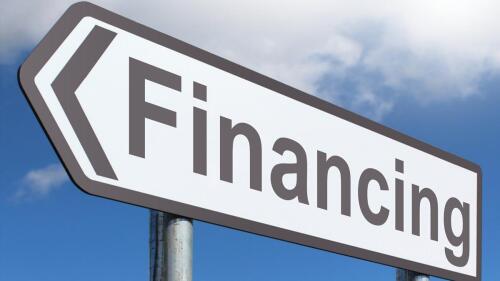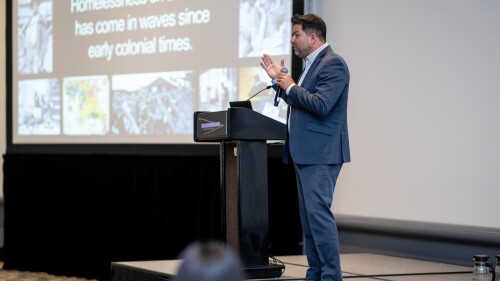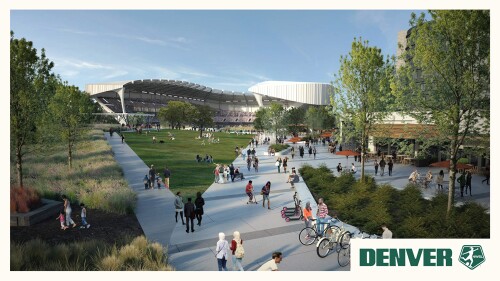“There’s one thing that the Brooklyn waterfront has that Manhattan doesn’t,” says A.J. Pires, executive vice president of Brooklyn-based Alloy Development. “It has a view of Manhattan.”
Granted, there was a time back in the 1970s and 1980s when that backdrop of one of the world’s most famous skylines may have seemed like a painful contrast to the warehouse and factory districts on the other side of the East River, another reminder of Brooklyn’s faded status as one of the early 20th century’s great manufacturing centers.
Register for the ULI Fall Meeting in NYC
But over the past decade and a half, two formerly gritty neighborhoods have undergone startling transformations. DUMBO—an acronym for “Down Under the Manhattan Bridge Overpass,” which is wedged between Brooklyn Heights, Vinegar Hill, and downtown Brooklyn—has evolved into a hub for more than 400 digital businesses. Today, it is home to companies ranging from marketplace Etsy to web design, strategy, and social media-marketing firm Huge.
Meanwhile, Williamsburg—situated along the waterfront between the Navy Yard and Greenpoint, and bordered on the south by Bedford-Stuyvesant and Bushwick—has evolved into a 21st-century urban village that is a magnet for young musicians, artists, and members of the creative class. Their output now influences the nation’s tastes as profoundly as a previous generation of hipsters from lower Manhattan did during the 1980s.
Developers have played a key role in the resurgence of Brooklyn’s hot neighborhoods by repurposing former industrial buildings and creating housing for the burgeoning masses of knowledge workers who are flocking to the area. They are in the process of launching some ambitious large-scale mixed-use projects that may even more dramatically boost the area’s prominence.
The rise of the Brooklyn waterfront is one of the factors that “has helped shift New York City’s epicenter,” says David Lombino, director of special projects for Two Trees Management, a firm that led the way in developing DUMBO and which is now building a $1.5 billion complex of mixed-use towers and waterfront recreation space on the site of the Domino Sugar refinery in Williamsburg. Brooklyn, he says, now “has its own center of gravity. The demand to live and work here is equal to that of Manhattan. Young, creative people—the talent the city has thrived upon for decades—prefer to be here.”
But if the resurgence of DUMBO, Williamsburg, and other parts of the new Brooklyn offers a lesson for the rest of the world, it is about the importance of having the imagination to see nascent trends and opportunities and the agility to move quickly to capitalize on them.
In its more than three centuries of existence, Brooklyn has undergone numerous transformations. A historical essay by local public television station WNET documents its evolution from colonial farming village to independent city to industrial district to assimilation point for new immigrants and refuge for intelligentsia fleeing the congestion, rising housing prices, and social stratification in Manhattan. From the mid to late 20th century, though, the massive decline of manufacturing and the abandonment of Brooklyn’s dockyards caused once-vibrant neighborhoods to slide into disrepair and decay.
But the decline of Brooklyn’s waterfront also created an opportunity for the area to be reborn. “Because of the cheap rents, a lot of people moved to Brooklyn,” notes Sharon Zukin, a Brooklyn College urban sociologist and author of Naked City: The Death and Life of Authentic Urban Places. “It was a place where you could afford to do artisanal things. In time, they became the core of the creative workforce.” She adds: “I don’t think that anybody in New York envisioned that it would become what it is now. There wasn’t a master plan to create a creative and digital center in Brooklyn. The pieces somehow came together.”
DUMBO
In the late 1970s, the Brooklyn waterfront’s transition got a big boost when Two Trees Management patriarch David Walentas discovered DUMBO—which at the time was a dilapidated district known as Fulton Landing, inhabited by adventurous artists in search of cheap workspace. As described in a 2014 Fortune profile of Walentas, he decided to bet $12 million—half of it borrowed from a friend, cosmetics heir Ronald Lauder, and his brother Leonard Lauder—on a half-dozen buildings with 2 million square feet (186,000 sq m) of space, initially with the idea of attracting financial firms that were threatening to leave lower Manhattan for New Jersey.
Walentas’s financial district vision didn’t quite work out, but after years of struggling with zoning, in the late 1990s Two Trees began converting old manufacturing buildings into residential condominiums, starting with the Clock Tower Building at 1 Main Street. Since then, Two Trees has led the way in converting other old buildings, such as 25 and 30 Washington Street, into rental properties. The firm is building a mixed-use project at the convergence of Water, Dock, and Front streets, which will include 300 mixed-income rental apartments, retail space, and a new middle school for local families. The project has proceeded ahead of pace and is expected to be ready for occupancy before the end of 2014, Curbed.com has reported.
But even as Two Trees gentrified the area, the firm made what turned out to be a crucial decision: It tried to preserve the area’s arty ambience and avoid commercial homogenization, even going so far as to give away space to creators and arts institutions. Lombino explains: “Galleries give the area a certain look and feel that’s desirable. And we haven’t leased any space to Starbucks. Instead, we’ve tried to curate the retail with independents instead of big-box stores or chains. There’s a historical fabric here that you can’t create, with cobblestone streets and buildings that date back to the 19th century, and we’ve respected that.”
Another crucial stage in DUMBO’s metamorphosis, though, was largely unplanned. Starting in the late 1990s, new digital companies started to show up, looking for affordable office space. Seeing an opportunity, Two Trees moved to accommodate their nontraditional needs. “Many of those companies don’t want traditional Class A office space—not with ten-year leases with expensive brokerage fees,” says Lombino. “We’ve adjusted our business to the unique demands of the startup culture. We don’t have a traditional security apparatus—we prefer short-term leases. And you’re welcome to bring your dog. We run our commercial portfolio much like you would run residential.”
As a result, DUMBO today is home to an array of firms with playful names such as Huge, Carrot Creative, and Big Spaceship, which provide the sorts of services—product design, online marketing strategy, social network utilization—that drive an ever-increasing swath of the global economy. As Huge chief executive officer Aaron Shapiro explains, the flexibility to be scalable was a huge plus.
“We found space in the neighborhood that could grow with us and that was suited for the kind of open environments that are important to the way we work and the kind of work we do,” Shapiro says. “Over the years the neighborhood has definitely changed, and it’s been fun to watch it grow along with us—and the other companies that have grown up here as well. It’s definitely more upscale than it used to be, but the evolution of Brooklyn Bridge Park, the regular addition of restaurants and transportation options, and the growth of the digital community here have kept it a compelling place to stay.”
The proximity to artists and other creators makes DUMBO an alluring locale, Shapiro says. “It’s definitely part of the appeal. If this place started to feel like midtown, it wouldn’t take long for everyone to move their businesses to Bed-Stuy [Bedford-Stuyvesant].”
Williamsburg
Williamsburg underwent a parallel evolution, as its affordable apartment space attracted artists, musicians, and actors who were priced out of Manhattan, and in the early- to mid-2000s they turned former industrial spaces into venues for live performances. Over the years, the neighborhood’s shaggy-bearded, flannel-shirted, work-booted look became so emblematic that the New York Times website features a slide show, “Becoming a Williamsburg Hipster,” that teaches aspirants how to achieve it.
But looks can be deceiving. As journalist, author, and Manhattan Institute fellow Kay S. Hymowitz has written, the number of college-educated residents in Williamsburg increased by 80 percent between 2000 and 2008. Unlike their predecessors, “these grads are not only artsy, they’re tech-savvy and entrepreneurial. . . . These are beneficiaries of a technology-fueled design economy, people who have been able to harness their creativity to digital media.”
Underneath the quirky bohemian image, the cutting edge of Brooklyn is evolving into a lasting place. As development executive Pires explains, New York City’s traditional model envisioned workers commuting from the suburbs and outer boroughs to work in Manhattan’s creative and knowledge industries. But that dynamic has changed, and the emerging neighborhoods in Brooklyn have matured from edgy frontiers for bohemians on the move into places with a more long-term attraction for residents.
“People aren’t necessarily moving to the suburbs as they get older,” Pires says. “The area has matured, with more amenities, and the schools are better.” That has created an increasing demand for 2,500- to 3,000-square-foot (230 to 280 sq m) family-friendly living spaces.
Williamsburg also has emerged as an opportunity for developers. In 2008, Jed Walentas, a Two Trees principal and son of the firm’s aforementioned founder, came up with the idea of acquiring a brick-and-timber factory building built in 1901. Two Trees spent $20 million converting it into the Wythe Hotel, which contains 72 guest rooms, event space, a restaurant, and a rooftop bar. To give the boutique hostelry a historic feel, the renovation incorporated salvaged materials from the structure’s former industrial life such as a sculptural marquee fashioned from old tin signage. “There are lines to get into the rooftop bar,” Lombino says.
A Global Brooklyn Brand
Another major factor in the transformation of the Brooklyn waterfront is Brooklyn Bridge Park, a 32-acre (13 ha) recreation and green space created in the mid-2000s by a public/private partnership that finances maintenance and operations by collecting payments from private residential developments adjacent to it. The project was a finalist for the 2013 ULI Urban Open Space Award.
“The park has made the waterfront accessible,” explains Tucker Reed, president of the Downtown Brooklyn Partnership, a civic group. “The old warehouses and shipping facilities cut off people in Brooklyn from the waterfront. Today, you have bocce and basketball courts and roller skating and lawns for recreation—all with a view of Manhattan and the East River that is one of a kind. And when you go down to the park, it’s a mixture of Brooklynites from all over the borough who are using it, so it’s helping to bring people together.”
Meanwhile, Two Trees has embarked on an ambitious mixed-use project in Williamsburg that could dramatically transform another stretch of the East River. In 2012, the company spent $185 million to acquire the site of the Domino Sugar refinery, whose redevelopment had stalled. Manhattan-based SHoP Architects redesigned a previously approved plan to create a new vision for a $1.5 billion complex that will include 2,200 high-rise apartments, two office buildings, a school, a public plaza, and a quarter-mile-long (0.4 km) waterfront park that will include an “artifact walk” fashioned in part from salvaged pieces of the original factory. SHoP principal Vishaan Chakrabarti has described the latter as “Williamsburg’s version of the High Line.”
To create more open space than allotted in the site’s original design, SHoP eliminated an entire building, replacing it with a public plaza, and created buildings with tall, slender, unorthodox profiles to preserve the waterfront sight lines for the neighborhood behind the site. One structure features two 55-foot-wide (17 m) towers set 120 feet (37 m) apart and joined at the top, while another was described by Curbed.com as resembling “two stacked Tetris pieces with a gap between them.” The tallest component is a pair of 60-story mixed-use towers connected by a sky bridge.
“We’re aiming to bring some creative architecture to Williamsburg,” Lombino says. “We are taking great pains with the master plan to really integrate the development into the rest of the neighborhood. We’re actually breaking up the superblock that was there and reconnecting the east–west street grid.”
Another major project in the works along the waterfront is DUMBO Heights, a cluster of buildings acquired in 2013 by the Kushner Companies, RFR Realty, and LIVWRK Holdings for a reported price of $375 million. The developers plan to convert the site into a technology campus outfitted with upscale amenities, including a gourmet food market and health and wellness facilities.
The waterfront projects could act in synergy with the recent surge of development elsewhere in the borough. In the downtown Brooklyn core, $4 billion in investment has helped create 5,200 residential units and 1 million square feet (93,000 sq m) of retail and office space over the past decade, according to Reed. And not far away, developer Forest City built the $1 billion Barclays Center, where the National Basketball Association’s Brooklyn Nets are the first major league team to wear the borough’s name since the Dodgers fled to Los Angeles back in 1957. The arena is envisioned as an anchor of Atlantic Yards, a massive development project featuring modular construction that has been in the works for more than a decade and reportedly is now scheduled to begin construction in 2015. Reed sees all of this as the genesis of “an independent Brooklyn brand that stands alongside New York—or else reorients it.”Lombino agrees. “The East River is now the middle of New York, rather than the fringe,” he says.
Patrick J. Kiger is a Washington, D.C.–area journalist, blogger, and author.









